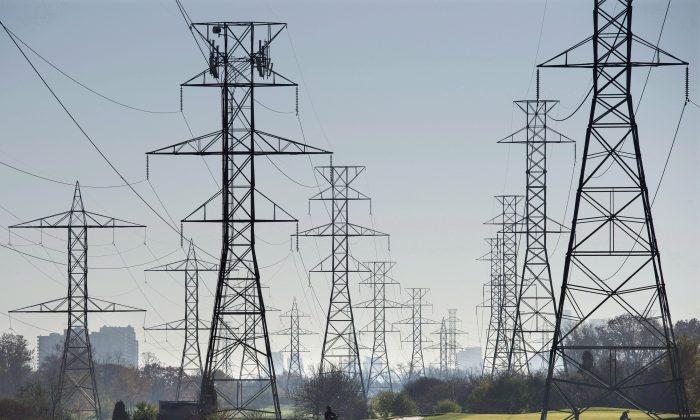TORONTO—Ontario has some advice for its fellow provinces as they move to meet the federal government’s newly unveiled goal of eliminating coal-fired power generation in Canada by 2030: keep an eye on those electricity bills.
Shutting down coal plants has all but eliminated Ontario’s once-ubiquitous smog days, making life easier for people with asthma and other breathing problems.
But it cost billions of dollars to build new transmission lines and replace coal with power from natural gas, wind, solar and biomass projects—not to mention maintaining a fleet of expensive nuclear reactors that still supply about half of the province’s electricity.
Electricity rates for homes and small businesses in Ontario jumped 70 percent between 2006 and 2014 as coal was being phased out.
The province’s auditor general said the Liberal government’s planning and implementation of new power generation as it moved to replace coal cost consumers an extra $37 billion during that time, and was expected to cost another $133 billion from 2015 to 2032.
The political fallout from soaring hydro bills is still causing problems for Premier Kathleen Wynne’s government, which is looking to take steps it hopes will defuse the anger of ratepayers before the 2018 election.
Wynne admitted last weekend that she should have paid closer attention to the impact of the government’s programs on hydro bills.
“People have told me that they’ve had to choose between paying the electricity bill and buying food or paying rent,” Wynne said. “That is unacceptable to me. Our government made a mistake. It was my mistake.”
Ontario phased out the last of its coal-fired generating stations in 2014, but coal power in Alberta, Saskatchewan, New Brunswick, and Nova Scotia still accounts for more than eight percent of Canada’s total greenhouse gas emissions.
Ontario Energy Minister Glenn Thibeault urged those provinces Monday, Nov. 21, to make sure they have a diverse supply mix—wind, solar, biomass, and nuclear power—to replace coal-fired generation.
“You need all of those to ensure you can replace the power that you’re eliminating,” Thibeault said.
“But the one thing I would suggest is they can never take their eye off the affordability ball. That’s something we could have done a better job at.”
Alberta announced this week that it is putting a cap on power prices while it moves away from coal-fired electricity production. Premier Rachel Notley said the cap, along with other reforms, will ensure stable and affordable prices during the transition.
From The Canadian Press






Friends Read Free